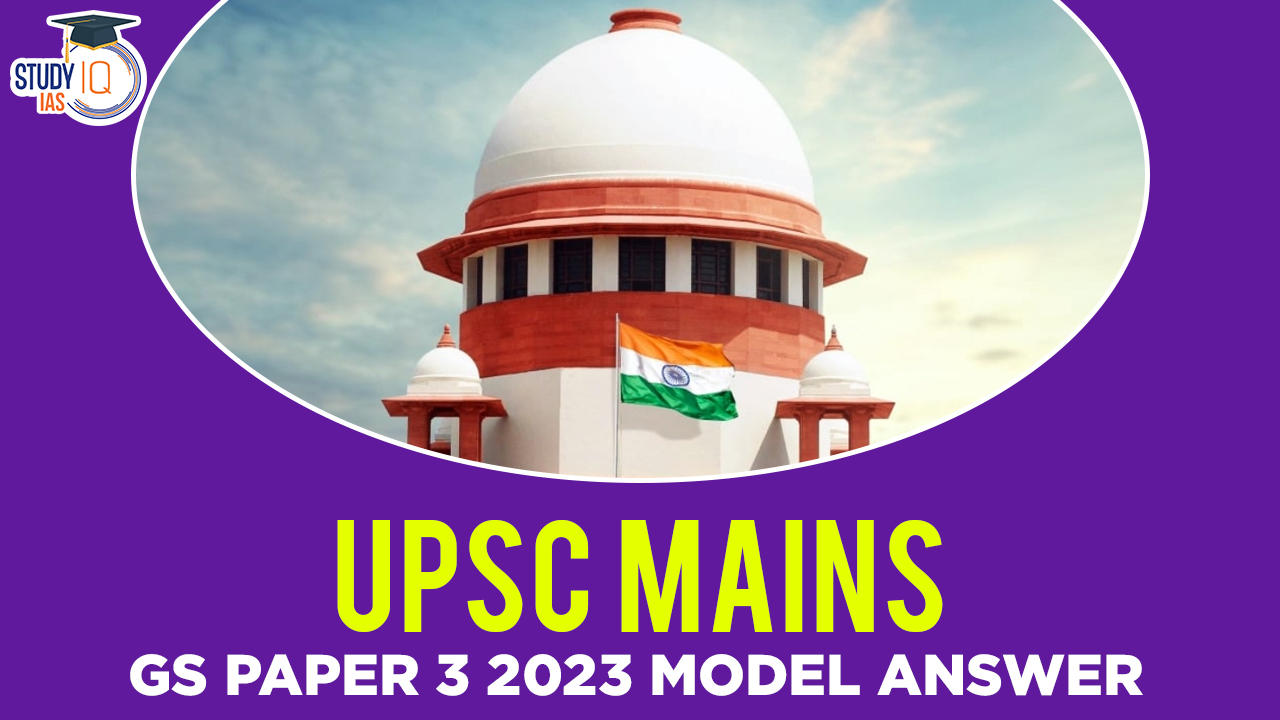Q16. What is the main task of India’s third moon mission which could not be achieved in its earlier mission? List the countries that have achieved this task. Introduce the subsystems in the spacecraft launched and explain the role of the Virtual Launch Control Centre’ at the Vikram Sarabhai Space Centre which contributed to the successful launch from Sriharikota. (15m) – Science & Tech
Introduction
Recently, India became the 4th nation to land a spacecraft on the moon. India’s 3rd moon mission Chandrayaan-3 is a follow-on mission to Chandrayaan-2. Its MAIN TASK is to demonstrate the capability in safe landing and roving on the lunar surface especially at the moon’s south pole.
It also has an objective of developing and demonstrating new technologies required for Inter planetary missions. It consists of a Lander-Vikram and Rover-Pragyan.
Body
Countries that have successfully landed on the moon:
| Year | Country | First Mission |
| 1959 | Russia (Soviet Union) | Luna-2 (This was the hard land but it manages to soft land Luna-9 in 1966) |
| 1969 | United States | Apollo-11 (Soft Landed with Neil Armstrong & Buzz Aldrin) |
| 2013 | China | Chang’e-3 soft landed with rover Yutu
(Chang’e-4 is worldwide first which landed on dark/far side of the moon in 2019) |
| 2023 | India | Chandrayaan-3 Soft Landed on moon in 2023 with Pragyan rover. |
Chandrayaan-3 spacecraft was launched by ISRO through the LVM3 launch vehicle (formerly GSLV Mark-III) from Satish Dhawan Space Centre, SriHarikota. The spacecraft carried following subsystems:
- Propulsion Module:
- SHAPE- for future discoveries of smaller planets to find out exo-planets in habitable zones like earth.
- Vikram Lander:
- RAMBHA- To measure the near surface plasma (ions and electrons) density and its changes with time
-
-
- ChaSTE- To carry out the measurements of thermal properties of the lunar surface near the polar region.
-
- ILSA- To measure seismicity around the landing site and delineate the structure of moon crust and mantle.
- LRA- A passive experiment system to understand the moon system.
- Pragyan Rover:
- LIBS- To derive the chemical composition of the moon surface using quantitative and qualitative elemental analysis.
-
- APXS- To determine the elemental composition (Mg, Al, Si, K, Ca,Ti, Fe) of Lunar soil and rocks around the lunar landing site.
Role of Virtual Launch Control Centre (VLCC):
- The Satish Dhawan Space Centre in Sriharikota, serves as the physical launch site and is final launch command center, while remote system checkouts was conducted from the Virtual Launch Control Centre (VSSC) located at Thumba.
- The VSSC is ISRO’s lead unit for launch vehicles, and is responsible for the design and development of the LVM3 launch vehicle which successfully transported Chandrayaan-3.
- The VSSC facility allows the ISRO to remotely carry out system checkouts on the launch vehicle prior to a mission to make sure that they are working properly. (It remotely carried out all system check-outs up to 14 minutes and 30 seconds before lift-off).
Conclusion
The success of the Chandrayaan-3 Mission represents India’s Space technology advancement and ISRO’s capabilities. Experience gained from this mission will help in better and successful launch of upcoming missions such as Shukrayaan, Gaganyaan, Aditya-L1 and also boosting the confidence of Indian youth and Space Startups, propelling India to new heights in the Amrit Kaal in 2047.
Check out the UPSC Mains GS Paper 3 2023 Analysis with detailed expatiation of the topics of Mains GS Paper 3 By the Study IQ Experts





















 WhatsApp
WhatsApp